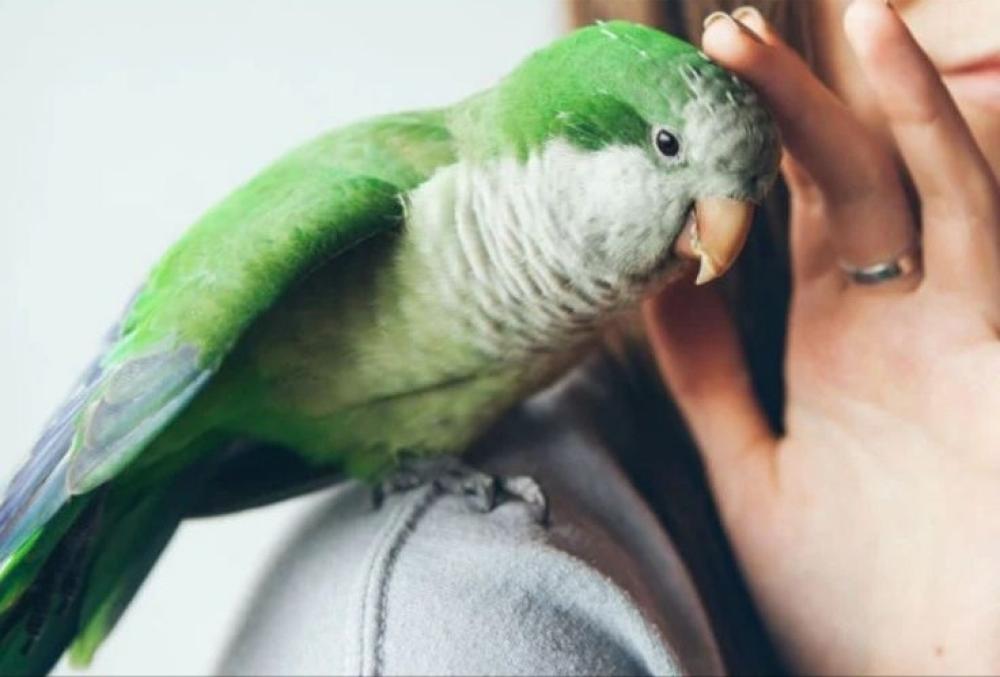Trimming your birds' nails and beaks is an essential part of bird care. It ensures their health and comfort and prevents serious health problems. This task may seem daunting at first, but with the right knowledge and tools, you can do it safely and effectively.
?Why is nail and beak trimming necessary
For nails:
Preventing tangling and injury: Wild birds' nails can grow naturally with constant wear and tear on rough surfaces. Pet birds, however, may not have enough wear and tear, leading to overgrown nails. Long nails can get tangled in toys, cages, or even cause injuries to the bird or you when handling it.
Keeping Your Bird Comfortable: Overly long nails make standing and walking difficult and painful for your bird, which can affect its weight distribution and cause joint problems.
Preventing sores: Long nails can wrap around a bird's toes and cause sores or serious injury.
Regarding beaks:
Proper feeding and grooming: A bird uses its beak for eating, drinking, grooming, and even climbing. A long or uneven beak can hinder these essential functions.
Preventing Deformities: In some cases, the beak can grow excessively due to a lack of natural wear and tear, poor nutrition, or underlying diseases. This excessive growth can lead to deformities that are difficult to correct.
General Health: Excessive beak growth can be an indicator of an internal health problem, such as liver problems.
?How do you know if your bird needs a nail or beak trim
Nails:
You notice that your bird's nails start to curl or catch on objects.
The bird has difficulty standing still on a perch.
The nails start to scratch your skin when you pick the bird up.
The nails become very sharp and pointed.
Beaks:
The beak appears longer than usual, especially the top.
The bird has difficulty picking up food or eating.
You see deformities in the shape of the beak.
You notice excessive growth or a crack in the beak.
Needed Tools
Aviary nail clippers: Different from human nail clippers, they come in different sizes to suit different birds.
Nail file or nail file: To smooth edges after clipping.
Styptic powder: Essential in case of accidental bleeding. Cornflour or cornstarch can be used as an emergency alternative.
Towel: To gently hold the bird still.
A good light source: For quick visualization of the blood vessels within the nail.
:Steps for safely clipping nails
Preparation: Have all your tools handy.
Secure the bird: This step is the most difficult. Ask another person for help if possible. Gently wrap the bird in a towel, keeping its head partially covered to minimize stress. One person should be responsible for carefully securing the bird without excessive pressure, while the other performs the clipping.
Identifying the "Quick": The "Quick" is the pink or dark part inside the nail that contains blood vessels and nerves. Avoid cutting it completely, as this will cause bleeding and pain for the bird. Use a light source to clearly locate it.
Cutting: Clip a small portion from the tip of the nail each time, stopping a few millimeters before reaching the "Quick." If the nail is dark and the "Quick" is difficult to see, clip very small amounts and repeat the process after two or three weeks.
Smoothing: After clipping, use a file to smooth any sharp edges.
Dealing with Bleeding: If bleeding occurs accidentally, apply pressure to the bleeding site with a styptic until it stops. Continue applying pressure for a minute or longer if necessary.
So, we've dedicated this to you from seventh bird:
Sevenbird Essential Cuttlefish Bone for All Birds to Maintain Beaks and Nails 2 pieces each 6 inch
Nutri-Nutritious and Enriching Feed Additives for Pets 30ml
:Beak Trimming Steps (must be performed by a professional
Beak trimming is more complex and requires greater expertise. Do not attempt to trim your bird's beak yourself unless you are absolutely sure of what you are doing and under the supervision of a veterinarian.Improper beak trimming can cause severe pain, bleeding, or even permanent damage to the bird.
Veterinarians or experienced bird keepers usually perform beak trimming using specialized tools, and sometimes they may use light anesthesia to reduce stress and pain.
Additional Tips:
Natural Perches: Provide your bird with a variety of natural wooden perches of varying diameters and textures. These perches help naturally wear down nails and beaks.
So, we've dedicated this to you from seventh bird:
Chilled bird perch anti-biting wood parrot
Safe Chew Toys: Encourage your bird to chew by providing safe, species-appropriate toys.
So, we've dedicated this to you from seventh bird:
Seven Bird Wooden Stand with Bird Swing
Seven Bird Colorful Bird Cage Bell Toy with 2 Bells
Seven Bird Colorful Bird Cage Bell Toy
Diet: Ensure your bird receives a balanced diet rich in vitamins and minerals.A deficiency in certain nutrients can affect the health of nails and beaks.
So, we've dedicated this to you from seventh bird:
Vinci Nutritious Food for Canaries 5kg
penita Lori Excel Food for Parrots and Lories 1kg
Perlyna stepu Food for medium sized tropical birds 1kg
Harrison High Potency Course Large & Medium Parrot & Bird Food 2.27kg
Regular Monitoring: Check your bird's nails and beak regularly as part of your daily or weekly grooming routine.
Consult Your Veterinarian: If you are unsure how to trim your bird's nails or beak, or if you notice any abnormalities or health problems, consult an avian veterinarian. Your veterinarian can perform professional trimming. Or provide you with the right guidance, or look for any underlying causes of excessive growth.
By following these guidelines, you can ensure that your bird's nails and beak remain healthy and in good condition, contributing to its happiness and well-being.

